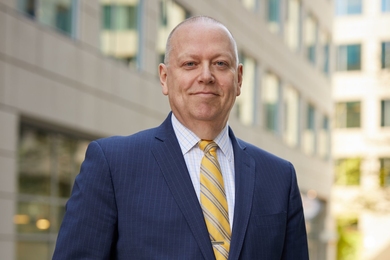The Department of Physics will hold a symposium featuring the three 1998 Nobel Prize winners in physics -- Robert B. Laughlin, Horst Stormer and Daniel Tsui -- on October 8, 1999. The symposium will be part of the Department's David H. Harris Lecture Series.
The phenomenon called the fractional quantum Hall effect was discovered by Drs. Stormer and Tsui in 1982 at MIT's Francis Bitter Magnet Laboratory. At the time, the director of the laboratory was Professor Peter Wolf of the Department of Physics. One year later, Dr. Laughlin, a theoretician and former graduate of the department, explained the effect.
The fractional quantum Hall effect occurs when electrons are confined to move in only two out of three dimensions and a strong magnetic field is applied perpendicular to the direction of motion. Dr. Laughlin showed that under these conditions a new state of matter is created: the electrons behave like a liquid instead of a gas. In this liquid state, all the electrons, although they each carry the usual indivisible unit of electric charge, act together in such a way as to appear like a single particle with a fractional charge.
"The discovery of the fractional quantum Hall effect and its explanation are two great achievements of the last half of the 20th century, said Professor Marc A. Kastner, head of the physics department. "I'm delighted that the year's Harris Lecture will provide us with the opportunity to celebrate the Nobel Prize and the role MIT played in supporting the research of Horst Stormer and Dan Tsui and the education of Bob Laughlin."
Information about the schedule of the symposium will be posted on the Department of Physics web site. Inquiries can be addressed to Isabel Cunha-Vasconcelos, physics department communications officer (Rm 6-105), physics@mit.edu.
A version of this article appeared in the June 9, 1999 issue of MIT Tech Talk (Volume 43, Number 33).





